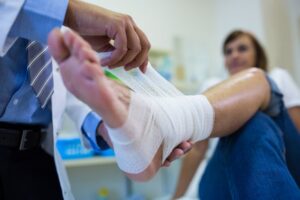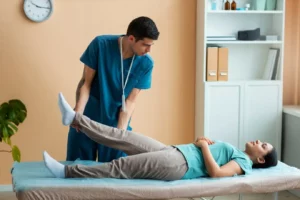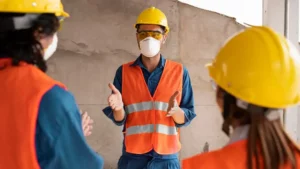Injuries can happen anywhere—whether you’re relaxing at home, working hard at your job, or enjoying recreational activities. Fortunately, many common injuries are preventable with a little awareness and proactive measures. In this blog, we’ll explore actionable tips to help you and your loved ones stay safe in every setting.
Preventing Injuries at Home
Your home should be a place of comfort and safety, but everyday hazards can lead to unexpected accidents.
1. Fall Prevention
- Install Grab Bars: Place them in bathrooms and near stairs for added stability.
- Use Non-Slip Mats: Add these to bathrooms and kitchens to reduce slipping hazards.
- Declutter Walkways: Keep hallways and stairs free of toys, shoes, or other obstacles.
- Ensure Proper Lighting: Use bright bulbs in staircases and hallways to improve visibility.
2. Fire and Burn Safety
- Install Smoke Alarms: Test alarms monthly and replace batteries twice a year.
- Keep Flammable Items Away: Store items like paper towels or curtains away from stoves.
- Set Water Heater Temperature: Ensure it’s below 120°F (48°C) to avoid scalding.
- Have a Fire Extinguisher Handy: Place it in the kitchen and know how to use it.
3. Prevent Poisoning
- Store Chemicals Safely: Keep cleaning products, medicines, and pesticides out of reach of children.
- Label Everything Clearly: Ensure all containers are properly labeled to avoid confusion.
- Install Carbon Monoxide Detectors: Place them in key areas to detect harmful gas leaks.
Preventing Injuries at Work
Workplace injuries can disrupt productivity and health. Whether you’re in an office or on a construction site, safety should always be a priority.
1. Ergonomic Safety
- Adjust Your Chair and Desk: Ensure your workstation promotes proper posture.
- Take Regular Breaks: Stand, stretch, and move around to reduce muscle strain.
- Use Ergonomic Equipment: Consider tools like wrist supports and adjustable monitors.
2. Hazard Awareness
- Keep Workspaces Clear: Avoid tripping by organizing tools, wires, and supplies.
- Inspect Equipment Regularly: Ensure machines and tools are in good working condition.
- Wear Protective Gear: Use helmets, gloves, goggles, or steel-toed boots as needed.
3. Safety Training
- Know Emergency Procedures: Familiarize yourself with evacuation routes and first aid protocols.
- Report Hazards: Notify supervisors about unsafe conditions immediately.
- Use Proper Lifting Techniques: Lift heavy items with your legs, not your back.
Preventing Injuries During Recreational Activities
Recreational activities are a great way to unwind, but they can also pose risks without proper precautions.
1. Outdoor Activities
- Wear Protective Gear: Use helmets, pads, or life vests for activities like biking, skating, or boating.
- Stay Hydrated: Drink plenty of water to avoid heat-related illnesses.
- Check Weather Conditions: Avoid activities during extreme heat, storms, or icy weather.
2. Sports Safety
- Warm Up Before Playing: Stretch and do light exercises to prepare your body.
- Use Appropriate Equipment: Wear sport-specific protective gear, like mouthguards or shin guards.
- Follow the Rules: Play by the rules to avoid unnecessary injuries.
3. Water Safety
- Supervise Children: Always keep an eye on kids near pools or open water.
- Know Your Limits: Don’t push yourself beyond your swimming or diving capabilities.
- Learn CPR: Being prepared for emergencies can save lives.
General Injury Prevention Tips for All Settings
- Stay Aware of Your Surroundings: Whether at home, work, or outdoors, paying attention can help you avoid hazards.
- Maintain a Healthy Lifestyle: Regular exercise, a balanced diet, and adequate sleep can reduce injury risk.
- Learn Basic First Aid: Knowing how to respond to common injuries can prevent complications.
- Keep Emergency Numbers Handy: Ensure you can quickly contact help when needed.
- Regularly Inspect Safety Equipment: From fire extinguishers to helmets, ensure all gear is in good condition.
Conclusion
Preventing injuries is all about preparation, awareness, and taking proactive steps to reduce risks. By implementing these actionable tips at home, work, and during recreational activities, you can create a safer environment for yourself and those around you.
For more injury prevention advice and safety resources, visit Injuries Wiki—your trusted guide to staying informed and protected.









